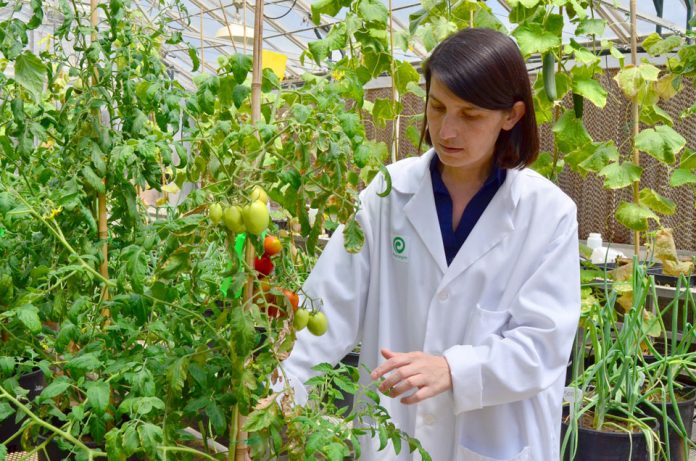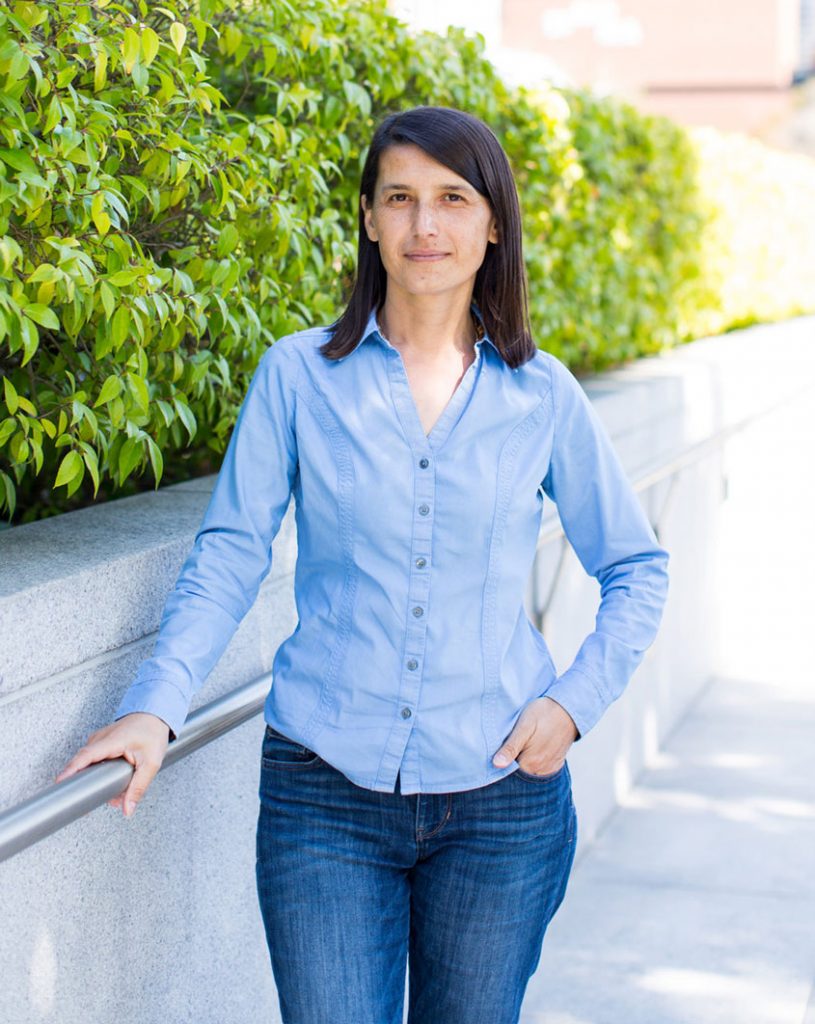
Editor’s Note: The following profile is an excerpt from Amy Wu’s book, “From Farms to Incubators: Women Innovators Revolutionizing How Our Food is Grown,” which tells the stories of women entrepreneurs who are transforming agriculture through high technology.
Fatma Kaplan’s advice to her younger self is fairly straightforward. “Skip the postdoc and start a company,” she says matter-of-factly. Kaplan’s journey from scientist to business entrepreneur was unplanned, but if she were to do it again, she says she’d focus on commercializing products rather than limiting them to laboratories.
The daughter of specialty crop farmers in Turkey, she had planned for a career as an academic and scientist in horticulture. As Kaplan writes in a Science magazine column, “For years, I had been committed to pursuing the traditional academic path because I wanted to run an independent research program and teach. I thought a tenure-track faculty position was the one job that offered both.”
That lengthy but predictable journey included three years of postdoctoral work followed by an adjunct-lecturer position (she interviewed for tenure-tracked positions but never got an offer). She was well on her way to achieving that: after graduating from the College of Agriculture at Cumhuriyet University with a bachelor’s degree in agricultural engineering and a master’s degree in molecular breeding of horticultural crops at the University of Florida in Gainesville, she completed her Ph.D. in plant molecular and cellular biology and stress tolerance.
Kaplan has a significant background in biology and chemistry.
Kaplan accepted a postdoctoral position at the National High Magnetic Field Laboratory, a facility at the University of Florida where she focused on the chemistry and behavior of nematode with pheromones. Little did she know but the seeds of the future company were planted during this time.
“I knew pheromones were important, but I did think someone from the agriculture industry would pick it up,” she says.
As part of her postdoctoral work at the University of Florida, she purified and identified the structures of the first Caenorhabditis elegans sex pheromones, which she says had eluded scientists for decades. She was able to grow multitudes of nematodes and collect enough pheromones to illustrate their molecular structure, which answered the question as to whether Caenorhabditis elegans had pheromones or not and whether they used them to communicate.
Controlling insect pests with pheromones was already being done on farms, but controlling nematodes with pheromones was new territory. Kaplan had the idea that with a chemical structured identified it could now be applied to specific plant-parasitic nematodes. In a milestone of achievement in the academic world, she published the research in the prestigious scientific journal Nature in 2008.
The laurel helped her land a three-year temporary position with the U.S. Department of Agriculture (USDA), which hired her to apply the new pheromone technology to help control parasitic nematodes (microscopic roundworms that infect plant roots). The timing was perfect since methyl bromide, the colorless, odorless toxic pesticide that had been widely used to control plant parasitic nematodes, was fast phasing out.
“Farmers needed a solution to control plant specific nematodes,” she recalls. “For me, my heart is with farmers wherever they run their farm in the world.”
Agriculture is part of her personal history. As a girl, she spent summers at her maternal grandparents’ hazelnut farm in Duzce, about 138 miles outside of the cosmopolitan city of Istanbul where she attended boarding school. Kaplan holds fond memories of the fresh produce and crisp air in her summers in Duzce.
Even though Kaplan was at the USDA, her plan to move forward on the academic track was solid: to attain a faculty position and continue to develop nematode pheromones. The product that Pheronym produces today had already taken shape, the plan being to produce pheromones and package them with beneficial nematodes.
She had a strong feeling when she was on to something, especially when talking with fellow scientists who were directly working with farmers. “They thought this was great and would help farmers and they said yes, why not write grants and develop this technology further,” she says.
While at the USDA, she had faith that she’d find an industry partner — hopefully a large corporation — to commercialize the new technology “because they have the resources.” As she moved on, she says, “We didn’t get much interest. We thought with the publications folks might reach out to us, but it didn’t really happen.”
Time was also ticking as her appointment with the USDA was coming to an end in 2011. She began thinking of taking the technology outside of the research lab and university setting.
“I thought who would be better to bring this technology to the market other than me? I had the vision, knowledge, education, passion and the farming background,” she says.
In the meantime, her plan to become a tenured professor stalled. In 2015, she interviewed for a tenure-track faculty position, which she estimates was her 185th application in five years. “I was excited to hear that I was the top candidate. But despite that encouraging sign, once again I didn’t get the offer,” she wrote in Science magazine’s blog.

Beyond the laboratory
Kaplan attributes the search for funding and the rejection letters from her job applications to pushing her into launching what would be Pheronym.
“We thought we should bring it to the market but going to investors was totally new to us,” says Kaplan. She began shifting the job applications into applications to agbio and agtech accelerators and incubators.
Her husband Karl Cameron Schiller has also been an integral part of the innovation. A trained economist, Schiller prepared the majority of the budgets for grants and completed any necessary registrations, including patents.
“We have complementary skills,” she says. In 2017 the couple decided to “work as if we had funding, look for investment and write grants for funding to accomplish our goals and milestones. If we did not get any funding by the end of May, we were going to close our doors,” Kaplan writes on her LinkedIn, referring to the laboratory.
The lucky break came when they were accepted in March 2017 into the IndieBio Accelerator based out of San Francisco, which came with much coveted wet lab space where experiments are conducted, $250,000 in funding and the requirement to be based in San Francisco for four months. They moved to California, temporarily leaving behind their lab in Florida.
Coupled with funding with the USDA, the company — including Kaplan, Schiller and their team — was able to develop its first prototype and conduct proof of concept trials.
IndieBio followed with a litany of accelerators and incubators (some of them conducted virtually, such as the LARTA Institute), and others such as Tech Futures Group and California Life Sciences Institute’ Fellows All-Star Team Advisory Program (FAST) that focused on mentorship.
Kaplan attributes mentorship to a great part of Pheronym’s success. “You can never have enough mentors. Stay tune for ‘Mentoring Pheronym,’” she wrote on her blog hosted on Medium in 2017.
It was at the California Life Sciences Institute’s program where she was paired with Pam Marrone, the founder of Marrone Bio Innovations (MBI) based in Davis. Kaplan and Schiller found themselves spending more time in Davis with Marrone as they developed their pitch deck and product.
In time, they began considering Davis as a base and were not only attracted by Marrone’s mentorship, but its proximity to U.C. Davis (one of the top schools for agriculture) and to Salinas Valley. During this time, they also created their first prototype and “we learned how to take a concept into something actually tangible.”
By the end of 2017, they decided to relocate from Florida to Davis. “Yes, I followed Pam to Davis, that mentorship was priceless,” she says with a laugh. Marrone sits on the company’s advisory board, and has been instrumental in connecting the company with investors. She’s encouraged Kaplan to make herself more visible through marketing, and the results are tangible. She’s become a fixture at agtech conferences, for example, speaking at the World AgriTech Conference in 2019.
Seeking commercialization
From 2019 to 2020, the company moved forward on field trials in orchards in Florida, which were delayed by the Covid-19 pandemic. In the meantime, Pheronym has been able to collect data that shows the pheromones are improving the effectiveness of the beneficial nematodes including at a range of temperatures.
Some of Pheronym’s milestones have been unexpected. In 2019 the company partnered with the USDA to send 120,000 beneficial nematodes to outer space at the International Space Station in Florida. That initiative gave birth to Astronematode, an unintentional brand. The upside is that it also brought overall awareness to nematodes and the power of biological controls and a publication in the prestigious peer-reviewed journal, npj Microgravity – Nature, 2020.
“We had a couple of advisers who said it’s a really cool project and it might work well with your brand,” she laughs.
Pheronym is the focus for now and not the Astronematodes, although at tradeshows and events there’s always a great demand for the Astronematode swag.
While not yet marketed, Pheronym’s core products are biopesticides that use pheromones to control nematodes, which in turn control 25 different insect pests. Nemastim is a bee-friendly pest control that disperses the beneficial nematodes and tackles pest insects. A second product, Pherocoat, serves as a repellent and alerts the plant-parasitic nematodes that the host plant is already infected. The core customers are growers specifically in the specialty crop space, including greenhouse growers for Nemastim. The core customers for the Pherocoat, a seed treatment, are both specialty and row crops.
There are questions that Pheronym continues to research and seek to achieve. It is looking to improve its existing products by increasing the effectiveness of the nematodes so growers can reduce the number in the field, thus reducing the cost of the nematodes, too. It has a growing list of pests it wants to target: they talked to pest control advisers and Driscoll’s and learned strawberry farmers are having significant problems with the spotted wing drosophila. They connected with organic cabbage growers and Wilbur-Ellis and found that cabbage maggot has been a significant challenge.
There’s been growing interest by seed companies and even cannabis companies, a poultry company and cattle ranching companies that are keen on controlling dung beetles and plant parasitic nematodes for organic production, respectively. Also on the upside, the company recently received funding from AgStart (an agtech accelerator) and will be hiring a technician. The company is also a finalist for the Ray of Hope Prize, that awards top biomimicry startups.
Back to the farm
In many ways the journey to create and build her own company brings Kaplan back full circle to her roots. Her grandparents on both sides were farmers and focused on specialty crops, especially tobacco. Tobacco was labor intensive and not easily profitable, so they switched to hazelnuts farming. As Kaplan tells it, her parents divorced when she was 9 months old, and while she spent much of her youth in boarding school, she also spent many summers on her grandparent’s farm.
Kaplan also seems to have inherited her entrepreneurial side from her mother. After her mother Dilber Demir Edis divorced, she juggled working for a tobacco company, managed her parents’ hazelnut farms and also studied to attain her nursing certificate at the local hospital so she could be a nurse for the tobacco company. After retiring, she launched her own real estate business, and expanded her hazelnut farms to fruit orchards. She is an award-winning farmer and has earned local and regional awards in the women farmer competitions held by Turkey’s Ministry of Agriculture and Forestry.
While Kaplan never considered the connections when she was younger, she now feels like she has come full circle.
As for the path not planned, she says her only regret is that she should have taken the entrepreneurial path earlier. “I wanted farmers to use my discoveries. I understood how to do develop technology in academia, but I didn’t know how to do it in practice. Now our results actually have direct impacts on farming and I’ve also learned how to communicate science. That is very rewarding.”
Amy Wu is an award-winning journalist and author of “From Farms to Incubators,” which was released on May 4 by Linden Publishing. For more information, go to farmstoincubators.com.













